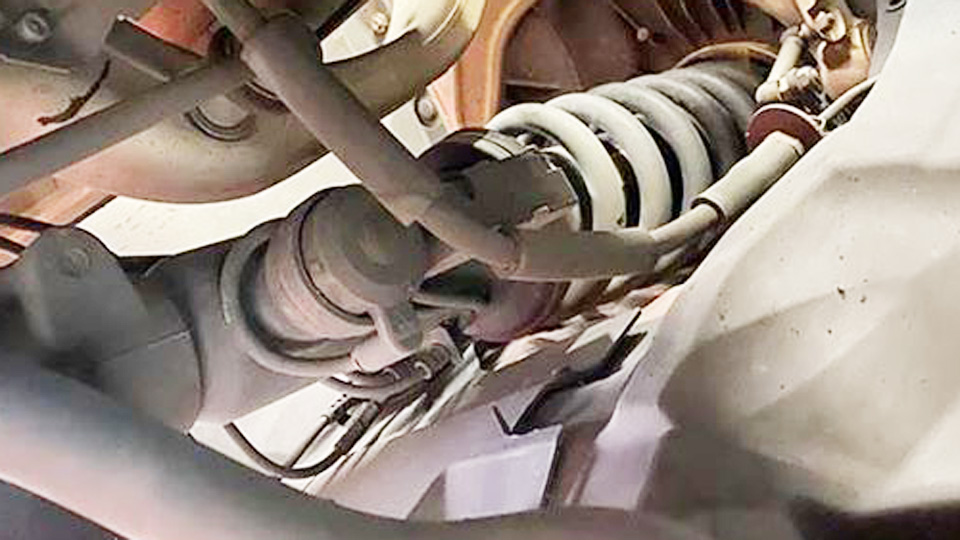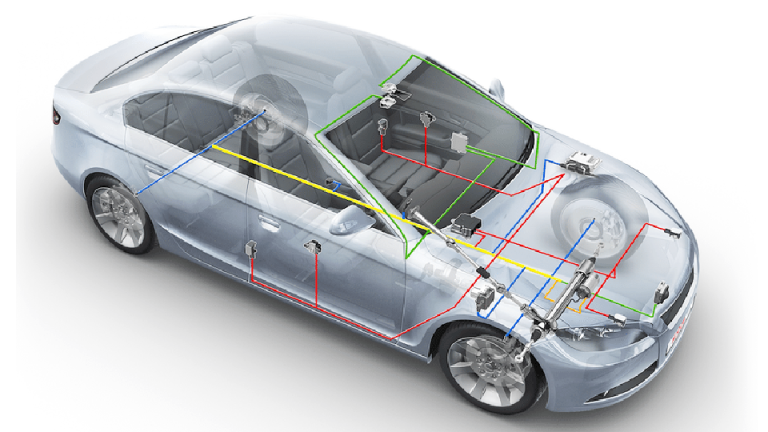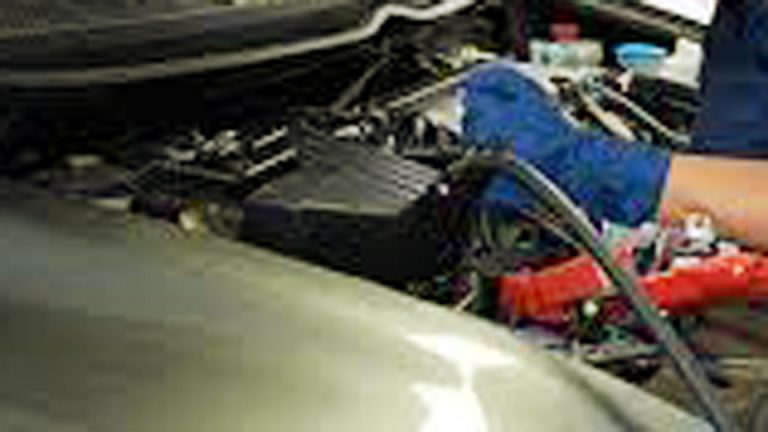You’re cruising down a quiet suburban street, windows down, enjoying the breeze, when you make a sharp turn into your driveway. Suddenly, a loud creak or groan interrupts the moment. It’s not just annoying—it’s concerning. Why does my car make creaking noises when I turn? As a gearhead who’s spent years tinkering with cars in my garage and helping friends troubleshoot their rides, I’ve heard this question plenty. Those creaks can signal anything from a quick fix to a serious issue, and I’m here to walk you through it all like we’re troubleshooting together in my driveway.
We’ll dive into the most common culprits behind creaking noises when turning, from worn-out suspension parts to simple lubrication needs. I’ll share practical tips, step-by-step diagnostics, and real-world fixes tailored for car owners, DIY mechanics, and enthusiasts across the USA. Whether you drive a pickup on rural roads or a sedan in city traffic, you’ll find solutions that fit your car’s needs and your driving habits.

Image by beckerservicecenter
Common Causes of Creaking Noises When Turning
Let’s start by breaking down why your car might be creaking when you turn. The steering and suspension systems take a beating, especially on America’s varied roads—pothole-riddled city streets, gravel backroads, or icy winter highways. These systems work together to keep your car stable and responsive, but they’re also prone to wear. Here are the most likely reasons for those creaks.
Worn Ball Joints
Ball joints are like the hips of your car’s suspension, connecting the control arms to the steering knuckles. They allow smooth pivoting when you turn, but they wear out over time, especially if you’re tackling rough roads or hauling heavy loads. A worn ball joint can creak, groan, or even clunk when you turn, particularly at low speeds.
Why it matters: If ignored, a failing ball joint can lead to sloppy steering or, worse, a complete failure that makes your wheel unstable. I once had a buddy with an old F-150 who ignored the creaking until his front wheel nearly collapsed during a turn—scary stuff.
How to check:
- Jack up the front of your car and secure it with jack stands.
- Grab the tire at the 12 and 6 o’clock positions and wiggle it. Excessive play or a creaking sound points to a bad ball joint.
- Inspect the rubber boot on the ball joint for cracks or grease leaks.
Fix: Replace the ball joint. For most cars, you’ll need a ball joint press, a socket set, and some patience. Expect to spend $50–$150 per joint for parts, depending on your car (e.g., a Honda Civic vs. a Dodge RAM). If you’re not comfortable, a shop will charge $200–$400 per side, including labor.
Pro tip: Always replace ball joints in pairs to maintain balanced handling, especially for trucks or SUVs.
Dry or Damaged Bushings
Bushings are rubber or polyurethane components that cushion metal parts in your suspension, like control arms or sway bars. When they dry out, crack, or wear down, they can creak like an old wooden floorboard, especially during turns when the suspension flexes.
Why it matters: Worn bushings reduce ride comfort and can cause uneven tire wear. I’ve seen this a lot in older sedans like Toyota Camrys driven in hot, dry states like Arizona, where rubber degrades faster.
How to check:
- Visually inspect bushings for cracks, splits, or missing chunks.
- Spray silicone lubricant on suspect bushings and take a short drive. If the creaking stops temporarily, the bushing is likely the culprit.
Fix: Replace worn bushings with OEM or aftermarket polyurethane ones for better durability. A control arm bushing kit for a typical sedan costs $30–$100. DIY replacement requires a press or a bushing removal tool, but it’s doable in a weekend. Shops charge $150–$500, depending on labor rates in your area.
Warning: Don’t over-lubricate bushings as a long-term fix—it’s a Band-Aid that won’t last.
Faulty Tie Rod Ends
Tie rod ends connect your steering rack to the wheels, transmitting your steering input. When they wear out, they can creak or pop during turns, especially at low speeds or when parking.
Why it matters: Loose tie rod ends cause vague steering and can lead to alignment issues, chewing up your tires. I once helped a neighbor with a creaking Chevy Malibu—it turned out the tie rod end was so loose it was barely holding on.
How to check:
- Jack up the car and secure it.
- Wiggle the tire side to side. If you hear a creak or feel play, inspect the tie rod end for looseness or a torn boot.
- Check for grease leaks or rust around the joint.
Fix: Replace the tie rod end ($20–$80 per side). You’ll need basic tools and an alignment afterward to ensure proper tire wear. A shop will charge $150–$300 per side, including alignment.
Pro tip: If you’re replacing one tie rod end, check the other side too—uneven wear can throw off your steering.
Power Steering Issues
Your power steering system relies on fluid, a pump, and a rack to make turning smooth. Low fluid, air in the system, or a worn pump can cause creaking or whining noises when you turn the wheel, especially at low speeds.
Why it matters: Ignoring power steering problems can lead to pump failure, making steering heavy and unsafe. This is common in older vehicles or those driven in stop-and-go traffic, like in Los Angeles or New York City.
How to check:
- Check the power steering fluid level in the reservoir (usually near the engine). Top off with the manufacturer’s-dot-3recommended fluid if low.
- Turn the wheel back and forth with the engine off. Listen for creaks or squeals.
- Inspect the pump and rack for leaks or damage.
Fix: Start by topping off or flushing the power steering fluid ($10–$20 for fluid). If the noise persists, the pump or rack may need replacement ($200–$800 for parts and labor). DIY fluid flushes are straightforward with a turkey baster or siphon pump, but racks and pumps are best left to pros.
Warning: Use only the fluid specified in your owner’s manual—mixing types can damage the system.
Strut or Shock Mount Issues
Strut mounts sit at the top of your suspension struts, acting as a pivot point during turns. Worn or dry strut mounts can creak, especially in colder climates where rubber hardens, like in Minnesota or Michigan winters.
Why it matters: A bad strut mount can affect alignment and handling, making your car feel unstable. I’ve seen this on high-mileage SUVs like Jeep Grand Cherokees driven on rough rural roads.
How to check:
- Bounce the front of the car up and down. Creaking from the top of the strut suggests a bad mount.
- Visually inspect the mount for cracked rubber or loose bolts.
Fix: Replace the strut mount ($50–$150 per side). This job requires a spring compressor and alignment afterward. Shops charge $200–$500 per side. If the struts are old (over 80,000 miles), consider replacing them too for better ride quality.
Diagnosing the Creak: A Step-by-Step Guide
Now that you know the likely culprits, let’s walk through how to pinpoint the issue. This process is like being a car detective—methodical and hands-on. Here’s how I do it in my garage:
- Recreate the Noise: Drive slowly in a parking lot, making tight turns both ways. Note when the creak happens (e.g., full lock, low speed, or specific turns). This helps narrow down the component.
- Visual Inspection: Pop the hood and look at the suspension and steering components. Check for worn boots, grease leaks, or cracked bushings.
- Jack and Wiggle Test: Jack up the front end, secure it, and wiggle each tire to check for play in ball joints or tie rods. Listen for creaks.
- Lubrication Test: Spray silicone lubricant on bushings or mounts. Test drive again. If the noise stops, you’ve likely found the issue.
- Bounce Test: Push down on each front corner of the car. Creaking from the top suggests strut mount issues.
- Check Fluid Levels: Ensure power steering fluid is at the correct level and not dirty or aerated.
Real-world example: Last summer, my cousin’s Ford Escape was creaking during sharp turns. We jacked it up, found a torn ball joint boot, and confirmed play in the joint. A $60 ball joint and a couple of hours in the garage fixed it, saving her $300 in shop fees.
Comparing Common Fixes: Cost and Difficulty
Here’s a quick comparison of the fixes we’ve covered, tailored for DIYers and those considering a shop:
| Component | Part Cost | Labor Cost (Shop) | DIY Difficulty | Tools Needed |
|---|---|---|---|---|
| Ball Joint | $50–$150 | $200–$400 | Moderate | Ball joint press, socket set |
| Bushings | $30–$100 | $150–$500 | Moderate | Bushing removal tool, press |
| Tie Rod End | $20–$80 | $150–$300 | Easy | Socket set, alignment |
| Power Steering Fluid Flush | $10–$20 | $50–$150 | Easy | Turkey baster, fluid |
| Strut Mount | $50–$150 | $200–$500 | Hard | Spring compressor, alignment |
Pro tip: Always get an alignment after replacing suspension or steering components to prevent tire wear. Expect $80–$150 at a shop.
Maintenance Tips to Prevent Creaking Noises
Prevention is better than repair, especially in harsh US driving conditions. Here’s how to keep your car quiet and smooth:
- Lubricate Regularly: Grease ball joints and tie rod ends every 30,000 miles or as per your manual. Use a grease gun with high-quality automotive grease ($10–$20).
- Inspect Annually: Check suspension and steering components yearly, especially before winter in snowy states like Wisconsin or Colorado, where salt accelerates wear.
- Drive Smart: Avoid potholes and curb impacts, common in cities like Chicago or Detroit. Slow down on rough roads to reduce stress on bushings and joints.
- Upgrade to Polyurethane: For enthusiasts, consider polyurethane bushings for better durability and sharper handling, especially on performance cars like Mustangs or WRXs.
Real-world example: I upgraded the bushings on my old Civic Si to polyurethane. The creaking stopped, and the car felt tighter on twisty mountain roads in Colorado.
When to Call a Professional
Some fixes are DIY-friendly, but others require specialized tools or expertise. Take it to a shop if:
- You lack a spring compressor for strut mounts.
- The power steering rack is leaking or damaged.
- You’re unsure about diagnosing play in components.
- The car needs an alignment (most DIYers don’t have alignment racks).
Shops in urban areas like Seattle or Miami might charge more ($100–$150/hour), while rural shops can be cheaper ($80–$100/hour). Get quotes from at least two shops and check reviews to avoid upsells.
Warning: Don’t drive long with a loud creak—it could lead to dangerous failures, especially on highways or during emergency maneuvers.
Upgrades to Improve Steering and Suspension
If you’re an enthusiast or want a quieter ride, consider these upgrades:
Performance Bushings: Polyurethane bushings (e.g., Energy Suspension, $50–$200) reduce noise and improve handling.
Upgraded Struts/Shocks: Brands like Bilstein or Koni ($300–$800/set) offer better damping and durability.
Steering Stabilizers: For trucks or SUVs, a stabilizer (e.g., Rancho, $50–$150) reduces vibration and wear on rough roads.
I installed Bilstein shocks on my Tacoma, and it’s been smoother and quieter on gravel roads in Texas.
Conclusion
Creaking noises when turning can be a minor annoyance or a sign of bigger trouble, but with the right approach, you can diagnose and fix the issue before it escalates. Whether it’s a dry bushing, a worn ball joint, or low power steering fluid, tackling the problem early saves money and keeps your car safe on America’s diverse roads.
Start with a simple inspection in your driveway, follow the diagnostic steps, and decide if it’s a DIY job or time to call a shop. You’ve got this—get under the hood, listen closely, and take pride in keeping your ride smooth and quiet.
Keep a small can of silicone spray in your trunk for quick bushing tests on the go. It’s saved me a few times during road trips.
FAQ
Why does my car only creak when turning at low speeds?
Low-speed turns put more stress on suspension components like ball joints or bushings, amplifying noises. Check for worn parts or dry bushings first.
Can I keep driving if my car is creaking?
If the noise is minor, you can drive short distances, but diagnose it soon. Loud creaks or clunks mean you should stop driving and inspect immediately to avoid safety issues.
How often should I grease my car’s suspension?
Grease ball joints and tie rod ends every 30,000 miles or as your manual recommends. Check more often if you drive on rough roads or in salty conditions.
Are polyurethane bushings worth it?
For enthusiasts or those in harsh climates, polyurethane bushings last longer and improve handling but can be stiffer. They’re great for performance cars or trucks.
What’s the cheapest way to fix a creaking noise?
Start with a $10 can of silicone spray to test bushings. If that doesn’t work, a tie rod end ($20–$80) is often the cheapest component to replace yourself.


